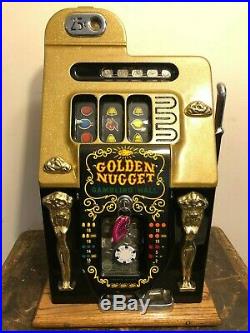

This was to be a common problem for the slot industry throughout the years not helped by the US Government's later decision not to allow patents on slot machines as they were "not useful items". Fey hadn't(and never did) patent any part of his machines and Mills considered them fair game to copy. this resulted a year later in the "Mills Liberty Bell". Other coin-operated music players were added to the range around the same period.Ī different type of collaboration came about again in 1906 when Mills simply stole a Charles Fey ( the man generally credited with inventing the Modern three-reel slot machine) three-reel slot from a bar in San Francisco, took it to Chicago and took it apart to see how it worked.
MILLS SLOT MACHINE MODELS REGISTRATION
This amazing coin-operated violin player (there was also a popular model for home use) was a truly incredible machine invented by Henry Sandell who had approached the Mills co in 1899 who appear to have backed his development of the machine leading to the patents being signed over to Mills at registration ,It was another 6 years before the machine was shown to the public.


The company continued to grow slowly until 1905 when they acquired the patent for the " Violano-Virtuoso". This floor standing cabinet machine featured a large spinning disc with coloured panels and owls, the machine was a great success and Mills incorporated the Owl into its trademark.Ī year later Mortimer sold the controlling interest in the business to his son Herbert Mills and the company name changed to The Mills Novelty Co. In 1897 the company launched its first coin-operated gambling machine the "Mills Owl". Somewhere between 18 Mortimer founded the M.B.M Cigar vending Co using machines based on that earlier patent. The Mills name enters the coin-operated world on the 14th April 1891 when Mortimer Mills was granted a patent on improvements to a coin-operated vending machine.


 0 kommentar(er)
0 kommentar(er)
